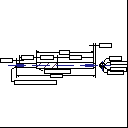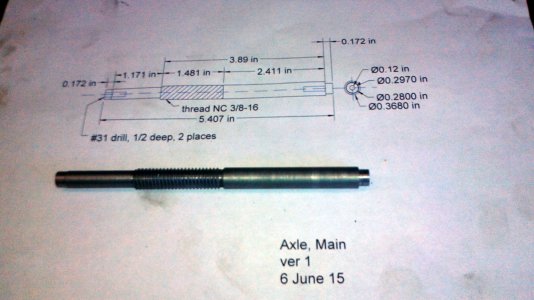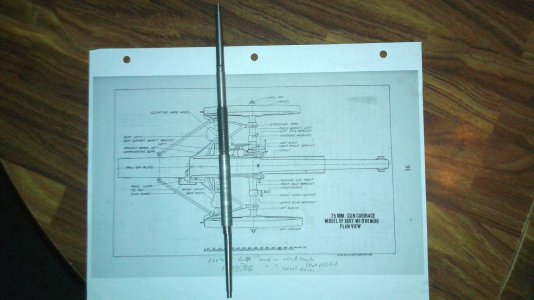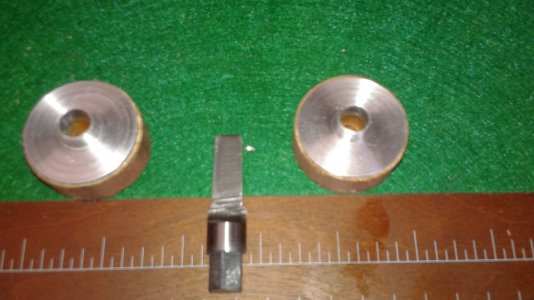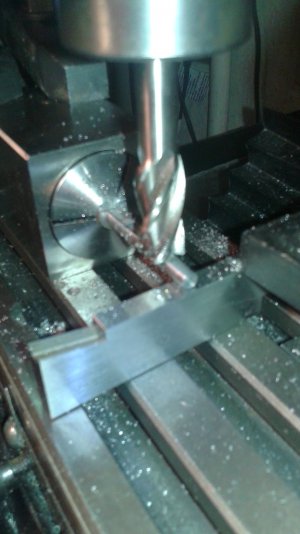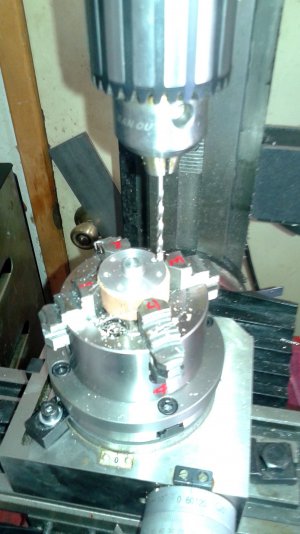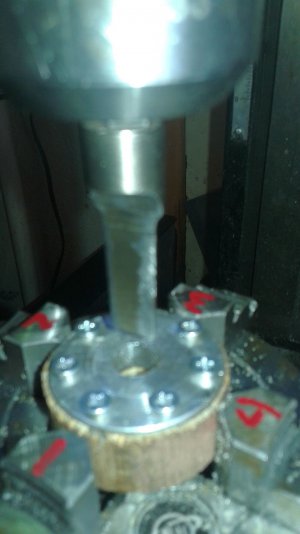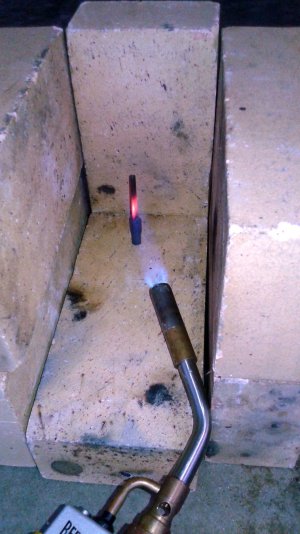Upon my retirement two years ago, my first major project was to restore a 75 year old Logan 820 lathe. (See my "Greg's Logan 820 Restoration" thread.) While working this, several friends asked what I'd actually make with the lathe (and my X2 mill). I had some ideas, but nothing was firm.
Okay, after months of research, here's the planned project: create a detailed, scratch-built, scale model of the French 75 mm cannon, Model 1897. Three motivating factors:
First major challenge is getting accurate dimensions of the numerous parts.
Last week I visited the Camp Roberts Historical Museum, in central California, to see their M1897 hoping to get virtually all the measurements I needed. Unfortunately, their gun is a later version, a significantly-different M1897A3. And it was missing several important assemblies. I did get a better understanding of the breech mechanism, and a few useful dimensions. (My grandfather's history-making gun is in the museum at West Point.)
The Ordinance Department's Handbook of Artillery has some un-dimensioned drawings, but they do have a scale bar. So I shall to use dividers to extract the necessary dimensions on major pieces. Then the undimensioned drawings in the US Army tech manuals, TM-305 and TM-1305, and a French document will used to get the required dimensional details.
I also have a contact in France who had attempted a similar project. He gave me the contact info another Frenchman who did the cannon in Solidworks. Maybe he will share them with me? [Interestingly, all three of us just happen to be ham radio guys.]
I'll use TurboCAD to first document the full-size gun, then to design the scale model. (I need to quickly get way more proficient with TurboCAD!)
My model will be between somewhere between 1:10 and 1:5 scale. It is not intended to be an firing weapon, but I hope to have as many of the mechanisms operable as possible. These may include the wheels, brakes, elevation and train mechanisms, recoil assembly, and the breech/ejector/safety/firing assembly.
I look forward to sharing my progress and problems with y'all.
Okay, after months of research, here's the planned project: create a detailed, scratch-built, scale model of the French 75 mm cannon, Model 1897. Three motivating factors:
- It's currently the centennial of WW I. Note: the first American shots were not fired until 23 October 1917, so I have 30 months to that precise 100th anniversary.
- Those historic first shots were fired by Battery C of the 6th Field Artillery. This was my grandfather's gun battery! So this project is in his honor. .
- Given my machine-shop hobby,it's ideal topic, requiring research, design, prototyping, creation and assembly of numerous metal (and wooden) parts. [My grandfather loved working in his shop too, mainly woodworking. I'll be thinking of him, particularly while making the spoked wooden wheels.]
First major challenge is getting accurate dimensions of the numerous parts.
Last week I visited the Camp Roberts Historical Museum, in central California, to see their M1897 hoping to get virtually all the measurements I needed. Unfortunately, their gun is a later version, a significantly-different M1897A3. And it was missing several important assemblies. I did get a better understanding of the breech mechanism, and a few useful dimensions. (My grandfather's history-making gun is in the museum at West Point.)
The Ordinance Department's Handbook of Artillery has some un-dimensioned drawings, but they do have a scale bar. So I shall to use dividers to extract the necessary dimensions on major pieces. Then the undimensioned drawings in the US Army tech manuals, TM-305 and TM-1305, and a French document will used to get the required dimensional details.
I also have a contact in France who had attempted a similar project. He gave me the contact info another Frenchman who did the cannon in Solidworks. Maybe he will share them with me? [Interestingly, all three of us just happen to be ham radio guys.]
I'll use TurboCAD to first document the full-size gun, then to design the scale model. (I need to quickly get way more proficient with TurboCAD!)
My model will be between somewhere between 1:10 and 1:5 scale. It is not intended to be an firing weapon, but I hope to have as many of the mechanisms operable as possible. These may include the wheels, brakes, elevation and train mechanisms, recoil assembly, and the breech/ejector/safety/firing assembly.
I look forward to sharing my progress and problems with y'all.


